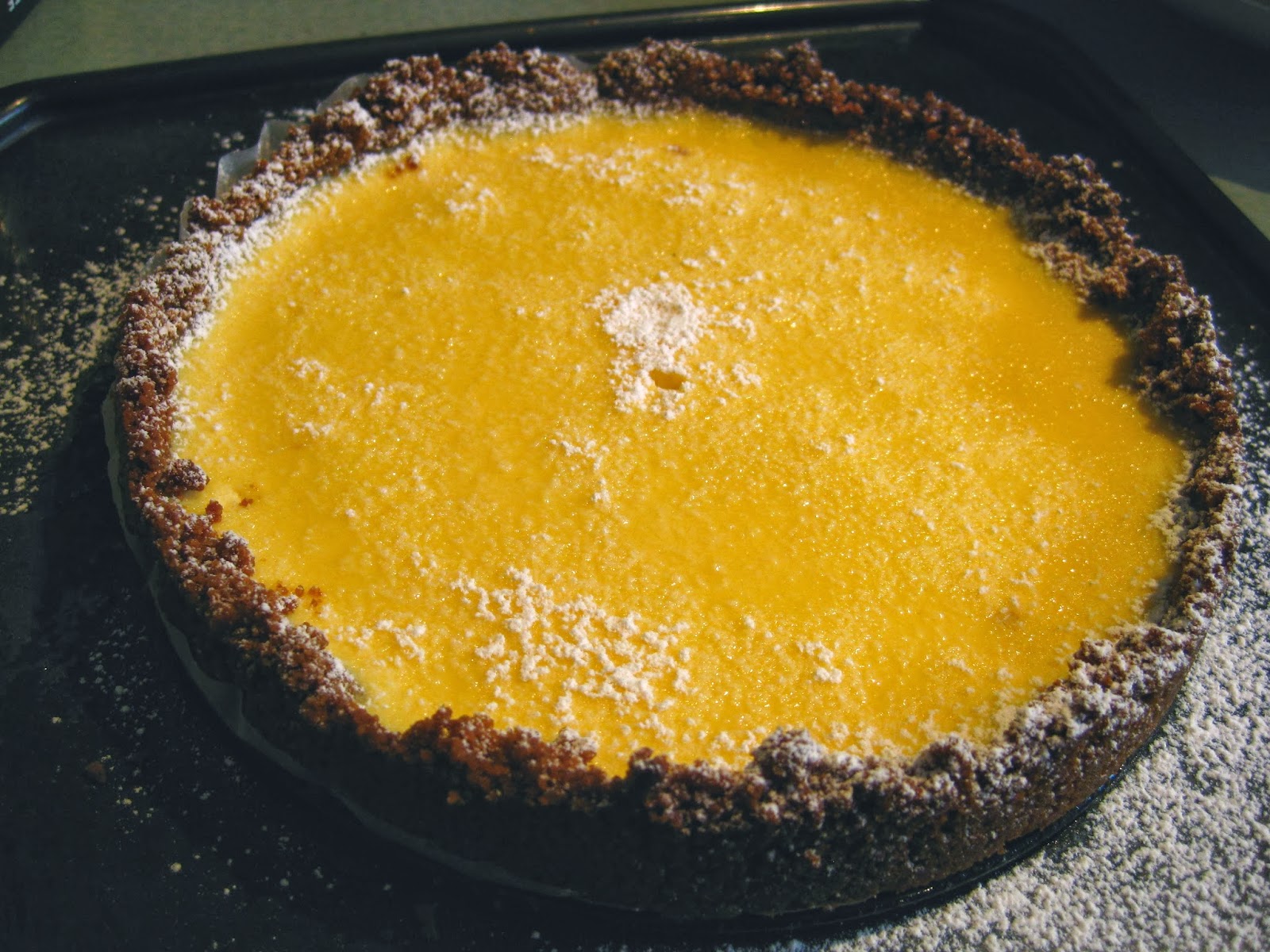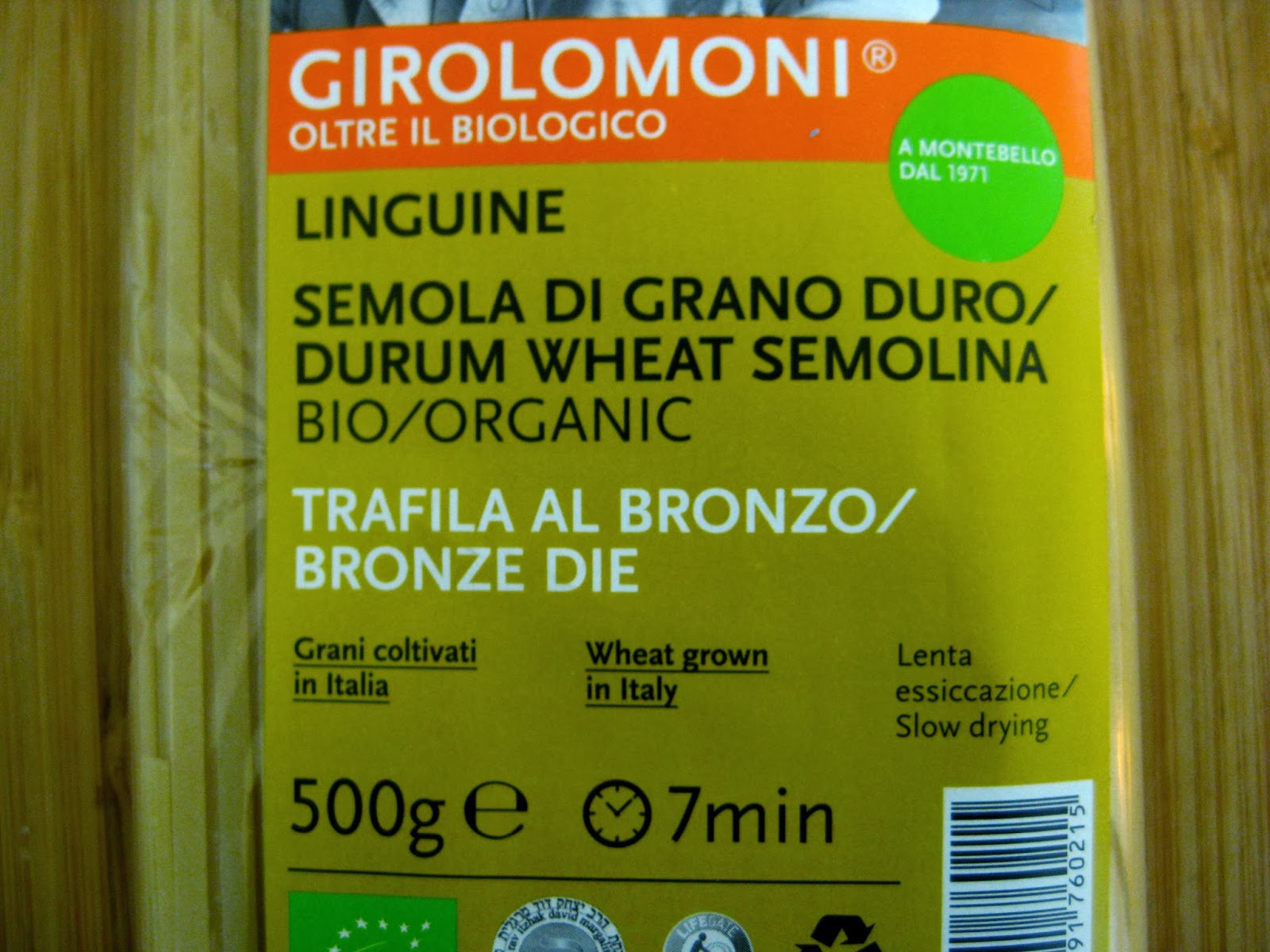So of course I Googled "lemon dessert", and there were plenty. But as soon as I found AW's recipe for a lemon ricotta tart, I knew that was what I would make. It's incredibly simple and it's also relatively low-fat.
I introduced two variations. AW uses sweet short pastry, but I thought that as it was really a kind of cheesecake, it would be nice with a biscuit-crumb-and-butter case made with gingernuts. And while she specified ricotta, I decided to try it with cottage cheese instead. It's less than half the price of ricotta, and if you beat it thoroughly and then drain it in a sieve, it usually makes a perfectly good substitute. In this case, I wouldn't even need to drain it.
Light lemon ricotta cheesecake
(adapted from an online NZ Women's Weekly recipe by Annabelle White. I halved the recipe to make a smaller tart - double it for a larger one.)
For the crust:
1 packet gingernuts
100g butter
Spray the sides of a round loose-bottomed cake tin lightly with oil (or grease very lightly with butter). Line the tin with baking paper. It needs to be sticking up all round the base for about 5 cm.
Crush the gingernuts in a food processor, or put them in a plastic bag and bash them to fairly fine crumbs. Put them in a bowl. Melt the butter and stir it thoroughly into the crumbs.
Line the tin with the crumb mixture. Press down to ensure the bottom is even and form the excess crumbs into a nice upstanding rim all around - it will be about 3-4 cm high. Place tin in the fridge to set the base.
For the filling:
2 large eggs
250g ricotta cheese or plain cottage cheese
Zest of 1/2 a large lemon
Juice of 1 large lemon
1/4 cup caster sugar
icing sugar to dust
whipped cream or yoghurt (or a mixture of both) to serve, if desired
Preheat oven to 175C (or 165C on fan-bake).
Put ricotta in food processor. If using cottage cheese instead, beat it well in the food processor before adding the other ingredients.
Add eggs, lemon zest, juice and caster sugar. Process together, using the pulse button, until well mixed. Pour this mixture carefully into the chilled pastry case. Stand on a thin baking sheet with a little rim (in case of any leaks - if you've made the crumb crust carefully, it won't leak.)
Place in the middle of the oven. Bake for 30 minutes and check to see if filling is nicely set. If not, bake for another 5 minutes and check again. (I found this was long enough for the smaller tart. If you are doubling the recipe it will need to cook for about 40-45 minutes.)
Cool, then get the serving plate ready, remove cheesecake carefully from the tin, lift off the base and remove the baking paper. Dust with icing sugar before serving.
I served this with whipped cream, with a spoonful of yoghurt stirred in. It's a lovely light, lemony cheesecake with a restrained shallow filling, nicely offset by the ginger crust - perfect for dessert. And fantastic next day too.








